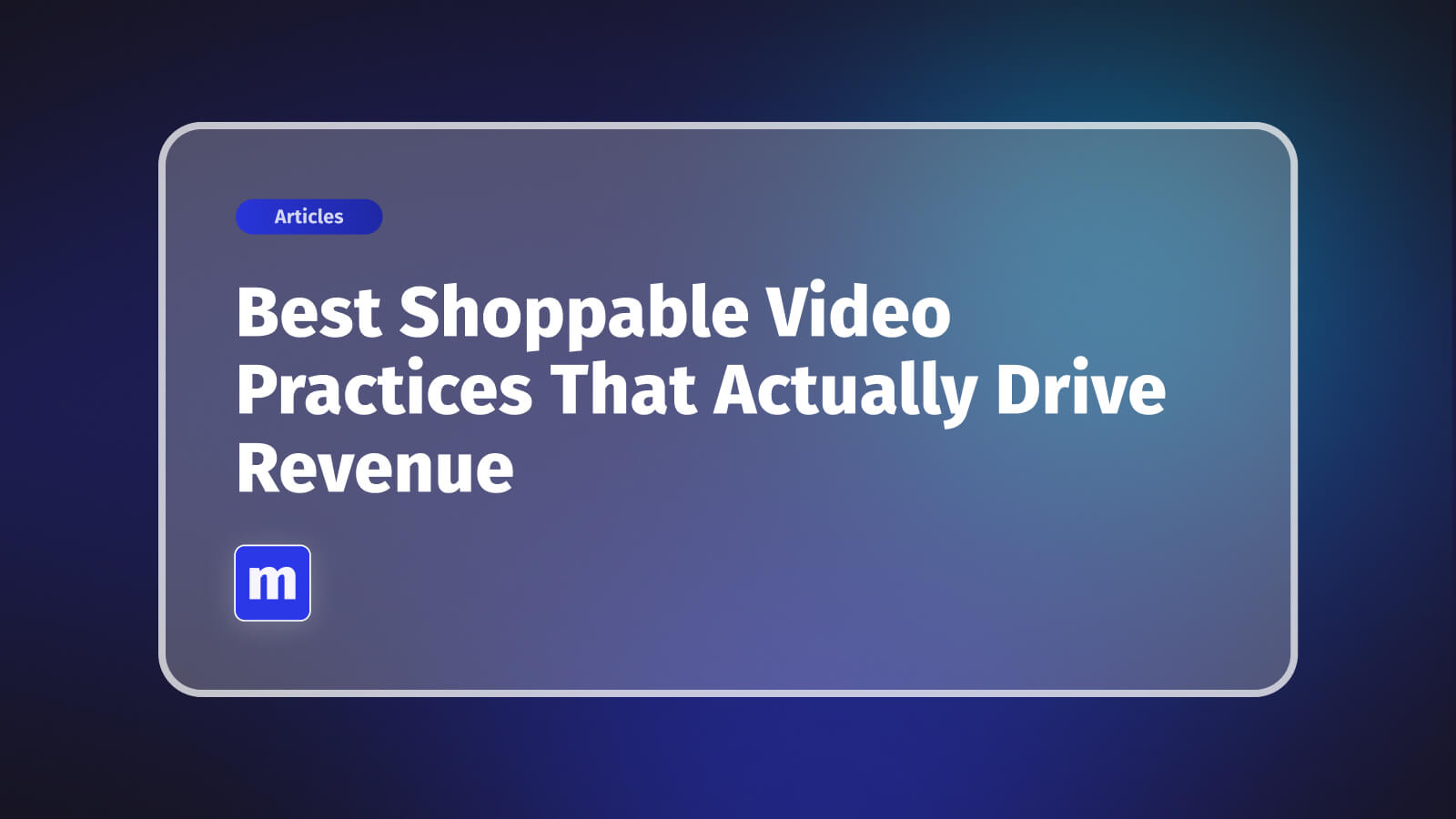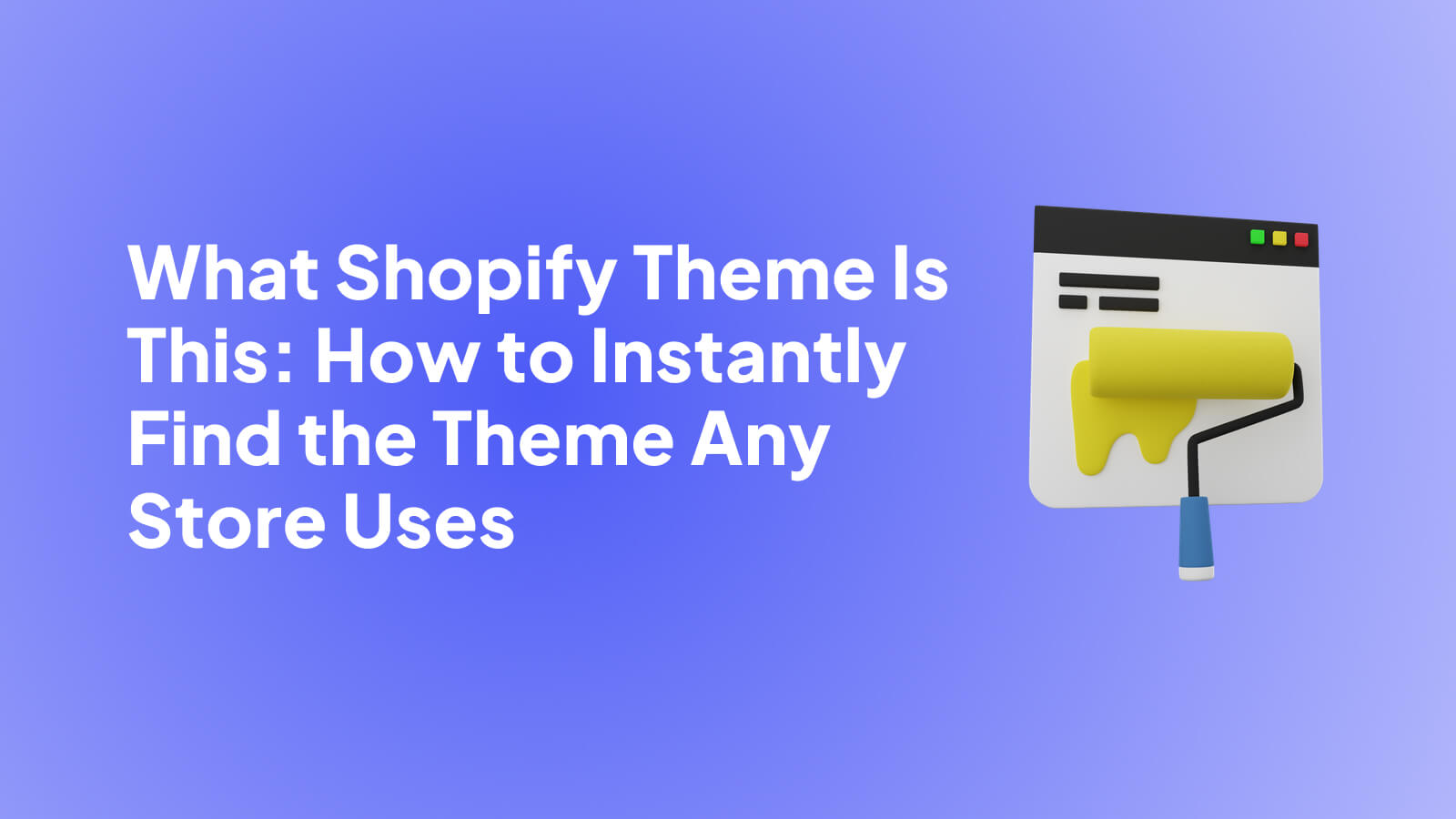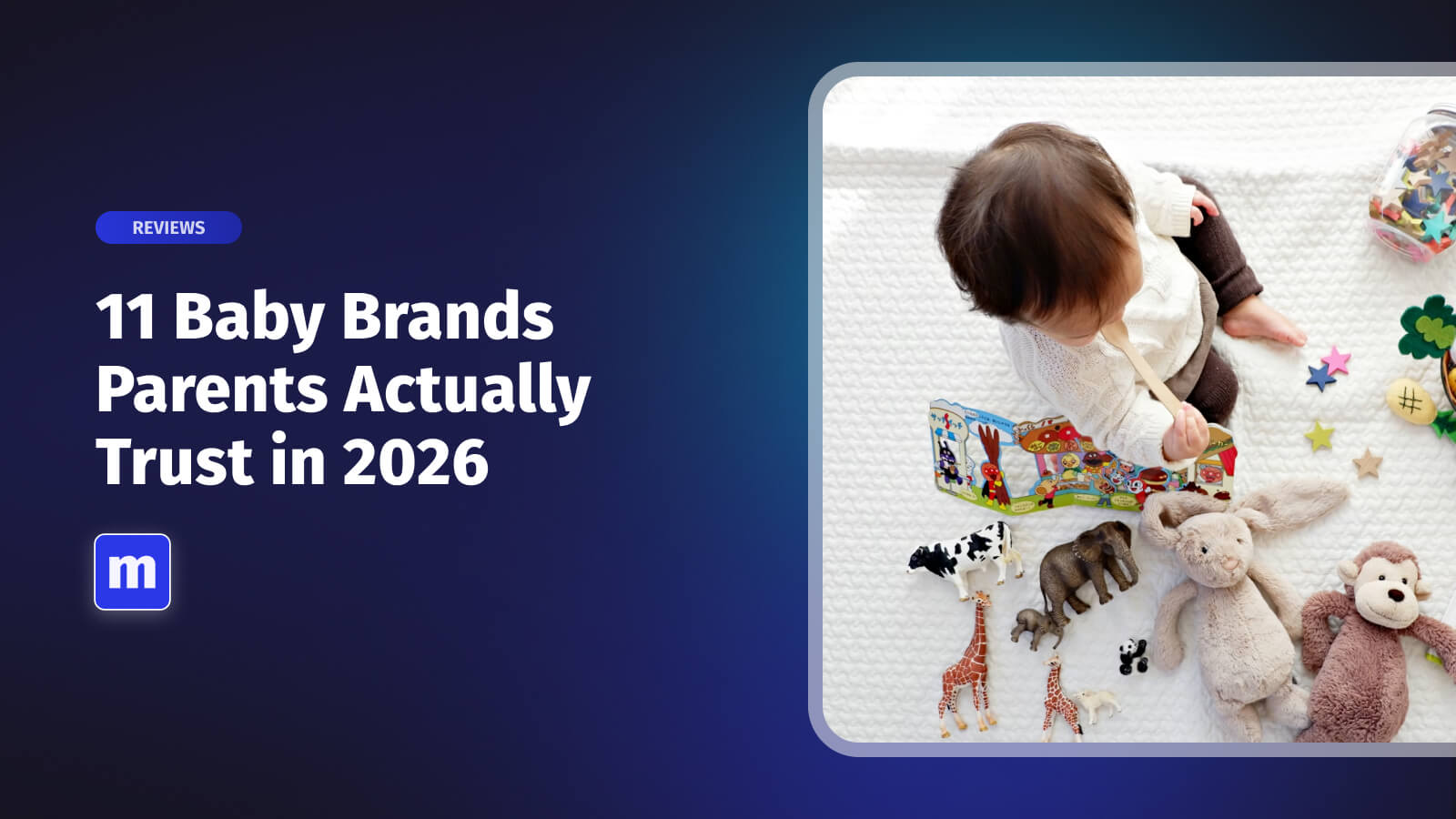.jpg)
Jump to Section:
In today's dynamic e-commerce landscape, competition is fiercer than ever. With just a few clicks, customers can compare products, prices, and reviews across multiple stores, making their purchasing decisions increasingly meticulous. How then can an e-commerce store stand out and assure potential customers of its credibility? Enter the power of social proof widgets.
Social proof, a psychological phenomenon where people mirror the actions of others in an attempt to reflect correct behavior, has transformed the way businesses engage online shoppers. In the context of e-commerce, it means showcasing genuine customer interactions, be it through reviews, ratings, or other user-generated content, to instill confidence in potential buyers. It's like having a friend subtly whisper, "Hey, I bought this and loved it!" to a doubtful shopper.
One of the most effective ways to seamlessly integrate social proof into your online store is by using social proof widgets. These tools, designed to highlight positive customer interactions and feedback, can substantially elevate a site's credibility and, in turn, its conversion rates. If you're still on the fence about integrating them or just unsure where to start, this article is for you! We'll be diving deep into the must-have social proof widgets every e-commerce store should consider.
What is a Social Proof Widget?
Imagine walking by a bustling restaurant in a city full of dining options. Your immediate thought might be, "That place must be good if it's so packed." That's social proof in action. Now, how do you capture that essence online, where physical cues are absent? The answer lies in social proof widgets.
A social proof widget is a digital tool integrated into websites, particularly e-commerce platforms, to display signs of customer satisfaction, engagement, and trust. They harness the influence of past and current users to nudge potential buyers towards making a purchase. Think of them as digital badges of approval or endorsements from the online community.
However, it's crucial to distinguish between genuine social proof and artificial endorsements. While both might look similar on the surface:
- Genuine Social Proof stems from actual customer interactions, like authentic reviews, real-time purchases, or user-submitted photos. They resonate because they're rooted in truth and offer real-world experiences.
- Artificial Endorsements, on the other hand, are fabricated testimonials or manipulated signs of engagement. Not only can savvy customers spot them, but they can also erode trust and harm a brand's reputation.
Given the digital nature of e-commerce, potential buyers can't physically touch or try products before purchasing. They rely heavily on external validations—what other customers are saying or doing. That's where social proof widgets come in, acting as bridges of trust and channels of genuine user feedback.
.png)
Why Every E-commerce Store Needs Social Proof Widgets
As e-commerce platforms proliferate and products become increasingly commoditized, distinguishing your brand and gaining customer trust is paramount. But why exactly should social proof widgets be at the forefront of this trust-building strategy? Here's a deep dive:
1. Trust-building: Shoppers Trust Other Shoppers
In an age of digital skepticism, consumers often trust peer reviews more than brand advertisements. A well-placed widget showcasing real-time feedback can instantly elevate the credibility of a product, making shoppers feel like they're part of a bigger community of satisfied customers.
2. Increase in Conversion Rates
The numbers don't lie. Studies have shown that displaying reviews can increase conversion rates significantly. When potential buyers see that others have already taken the plunge, they're more likely to do the same.
3. Reducing Cart Abandonment
One of the primary reasons shoppers abandon their carts is uncertainty. By displaying proofs like "X people bought this in the last 24 hours" or "Y customers rated this 5-stars", you assuage doubts and push them one step closer to finalizing their purchase.
4. Enhancing Brand Reputation
A transparent display of customer feedback, both positive and negative, sends a clear message: your brand values honesty and customer satisfaction. Over time, this not only fosters loyalty but also enhances your brand's overall reputation.
5. Driving Repeat Business
Social proof doesn't just sway first-time buyers. Returning customers also seek validation for their subsequent purchases. Widgets that showcase trending products or "frequently bought together" items can encourage repeat business by reinforcing the popularity of these products.
6. Elevating User Experience
Interactive widgets can enhance the browsing experience by making it more engaging and personalized. For instance, a widget displaying user-generated content can make the shopping experience feel more communal and less transactional.
7. Informed Product Decisions
By allowing prospects to ask questions (through Q&A widgets) and read feedback from other customers, you're arming them with the information they need to make informed buying decisions. This reduces post-purchase dissonance and potential product returns.
In essence, social proof widgets are not just fancy add-ons; they're essential tools in the modern e-commerce toolkit. They capture the collective voice of your customer base, turning passive browsers into confident buyers.
1. Customer Reviews & Ratings Widget
Every time we make a purchase online, there's a good chance we first skim through the reviews and ratings. They offer invaluable insights, from the product's quality to the seller's reliability. Thus, it's no surprise that the Customer Reviews & Ratings Widget is often considered the cornerstone of e-commerce social proof. Let's unpack its significance:
The Customer Reviews & Ratings Widget typically appears on product pages, allowing customers to rate products on a scale (usually out of 5 stars) and leave detailed feedback. These reviews can include text, photos, or even videos, giving potential buyers a comprehensive look at the product through the eyes of those who've already bought and used it.
.png)
Benefits:
1. Builds Trust Instantly: Reading about real experiences from fellow customers can immediately establish trust. Whether they're praising the product's features or highlighting minor issues, these authentic voices provide reassurance.
2. Reduces Uncertainties: Not sure about the product's size, material, or actual color? Reviews often fill in these gaps, answering questions that product descriptions might miss.
3. Boosts SEO with User-Generated Content: Search engines love fresh, user-generated content. Regularly updated reviews can improve your product page's SEO ranking, driving more organic traffic.
4. Enhances Credibility with Negative Reviews: Sounds counterintuitive, right? But a mix of positive and negative reviews makes your testimonials more believable. It shows transparency and provides the brand an opportunity to address and rectify issues publicly.
5. Facilitates Buying Decisions: A high average rating can act as a powerful motivator. For undecided customers, seeing a product with 4.5 stars and hundreds of positive reviews can be the nudge they need to hit the "Buy Now" button.
Best Practices for the Customer Reviews & Ratings Widget:
- Encourage Reviews: Post-purchase, send out emails or notifications prompting customers to leave a review. Offering incentives, like discount codes or loyalty points, can be effective.
- Display Recent Reviews First: Ensure newer reviews appear at the top. This keeps the feedback relevant and shows potential buyers that the product continues to satisfy customers.
- Allow Filtering & Sorting: Give visitors the option to filter by rating or sort by relevance. This enhances user experience and allows them to quickly find the information they're seeking.
- Respond to Reviews: Engage with both positive and negative feedback. This not only demonstrates excellent customer service but also builds brand trust.
Using Moast's Customer Reviews & Ratings Widget:
The Moast widget is not just about collecting ratings; it's about creating an interactive community of genuine buyers. The Moast widget offers a seamless integration process for e-commerce platforms, making it easy for site owners to set up and manage. With features like intuitive review prompts, multimedia support for user-uploaded images or videos, and responsive design for all devices, Moast ensures that every customer's voice is heard and presented in a polished manner. Their commitment to authenticity, paired with user-friendly functionalities, makes Moast's widget an indispensable asset for online retailers aiming for transparency and trust-building.
In the world of e-commerce, where physical touch and try are absent, the Customer Reviews & Ratings Widget acts as a digital equivalent to word-of-mouth. It's a bridge of trust, and no online store should operate without it.
.png)
2. Real-time Purchase Notifications
There's a certain allure to knowing you're not alone in making a buying decision. When we see others making similar choices, it fosters a sense of community and, more importantly, validation. Enter the world of Real-time Purchase Notifications - a digital testament to a product's popularity.
Real-time Purchase Notifications are those small pop-ups or banners you see on e-commerce sites indicating that "John from New York just bought this t-shirt" or "5 people are looking at this product right now." By providing real-time insights into the shopping behaviors of other customers, these notifications create a buzz around specific products, reinforcing their desirability.
.png)
Benefits:
1. Creates a Sense of Urgency: When potential buyers see that others are purchasing the same product, it generates a FOMO (Fear of Missing Out) effect. They might think, "If others are buying it, maybe I should too before it runs out."
2. Showcases Product Popularity: A consistent stream of notifications attests to a product's popularity, making it more appealing to customers who might be on the fence.
3. Builds Trust: Knowing that other customers are actively purchasing can instill a sense of trust and security, especially for first-time visitors to your site.
4. Enhances User Engagement: These dynamic notifications can make the shopping experience more interactive and engaging, capturing the user's attention and potentially directing them to products they might not have otherwise considered.
5. Supports Decision-making: For those unsure about a purchase, seeing that others are taking the leap can be just the nudge they need to click that "Add to Cart" button.
Best Practices for Real-time Purchase Notifications:
- Stay Genuine:- It's essential to ensure that your notifications are based on real purchases. Fabricating sales can lead to a loss of credibility if customers catch on.
- Opt for Customizability: Not all products or sales might be relevant to the current viewer. Tools that allow you to customize which notifications are shown can enhance relevance and user experience.
- Don't Overwhelm the User: While these notifications can be beneficial, they can also be distracting if overused. Striking a balance in frequency ensures they inform rather than annoy.
- Include a Direct Link: If a user is intrigued by a notification, providing a direct link to the product can streamline their browsing experience, increasing the likelihood of a sale.
Fomo's Real-time Purchase Notifications Widget:
One of the most reputable tools in this space is Fomo. True to its name (an acronym for "Fear of Missing Out"), Fomo specializes in showcasing real-time customer interactions. From purchases to sign-ups, Fomo provides e-commerce sites the ability to display these activities live to their audience.
Organic Life Start is an online store specializing in organic baby products that uses the Fomo widget effectively. By integrating Fomo's real-time notifications, Organic Start not only showcases its product popularity but also instills trust by transparently displaying genuine purchases made by customers. The immediacy of these notifications resonates with potential buyers, reinforcing the quality and demand for their offerings.
Including specific tools like Fomo and their real-life implementations gives your article an added layer of authenticity and practicality, guiding readers on actionable steps they can take for their businesses.
In the bustling marketplace of e-commerce, Real-time Purchase Notifications act as silent endorsers, amplifying the voice of the buying community and making the shopping journey feel less solitary and more communal.
3. User-Generated Content Galleries
In the age of social media, content generated by users, be it through Instagram posts, TikTok videos, or Pinterest pins, holds a unique charm. This content feels authentic, personal, and relatable, striking a chord that often polished brand commercials miss. E-commerce platforms are harnessing this power through User-Generated Content Galleries.
User-Generated Content Galleries are curated sections on e-commerce sites that showcase real customers using or showcasing products. These could be photos of someone wearing a fashion item, videos of a gadget in use, or creative displays of a product. By integrating these galleries onto product pages or dedicated community sections, businesses highlight real-world applications of their offerings.

Benefits:
1. Authenticity at its Best: UGC is unfiltered and genuine. Seeing real people, not models or actors, using a product adds an unmatched layer of trust.
2. Diverse Perspectives: Different customers use products in varied ways. A UGC gallery showcases this diversity, helping potential buyers visualize multiple applications or styles.
3. Boosts Engagement: Interactive galleries that allow users to browse, like, or even shop directly from user posts create an engaging shopping experience.
4. Incentive for Customers to Share: When customers know their photos or videos might be featured on a brand's website, they're more likely to share their experiences, creating a cycle of organic marketing.
5. Social Proof: Much like reviews, UGC acts as a testament to a product's quality and appeal. It's social proof that goes beyond words, tapping into visuals.
Best Practices for User-Generated Content Galleries:
- Ask for Permission: Before showcasing any user's content, always seek permission. This can be done through direct messaging or dedicated hashtags for submissions.
- Curation is Key: While it's tempting to include every piece of UGC, it's essential to curate to ensure quality, relevance, and a consistent brand image.
- Integrate with E-commerce: Some advanced UGC tools allow direct shopping from galleries. If a user likes a particular look or product application, they can shop directly from that post, streamlining the buying process.
- Celebrate and Reward Contributors: Acknowledge the users whose content gets featured. This could be through shoutouts, discount codes, or feature spots. It encourages more users to participate.
Glossier, a beauty brand that has taken the cosmetic world by storm, heavily integrates UGC into its online shopping experience. From the get-go, the brand positioned itself as "inspired by real life," and its use of UGC on its website embodies this philosophy.
How Glossier Implements UGC:
1. Instagram Integration: Glossier often shares user-submitted photos from Instagram directly on its product pages. Shoppers can see real users, with diverse skin types and tones, applying and wearing Glossier products. This provides potential buyers with a clearer expectation of the product's actual look and feel.
2. Testimonials with a Twist: Instead of just showcasing textual reviews, Glossier pairs them with user-submitted photos. This visual testimonial approach adds depth and authenticity to feedback.
3. Community Page: Beyond product pages, Glossier has dedicated sections where they celebrate their community. Here, they showcase user stories, photos, and experiences with the brand, emphasizing the communal aspect of beauty and self-care.
4. Engagement through Hashtags: On social media platforms, especially Instagram, Glossier encourages users to share their product experiences with specific hashtags, like #GlossierInRealLife. Not only does this create a reservoir of UGC for the brand to pull from, but it also fosters a sense of belonging among Glossier's customer base.
Why It Works:
Glossier's UGC approach works brilliantly because it aligns with their brand ethos of real-life beauty. By showcasing everyday users, not just polished influencers or celebrities, they resonate with a broader audience, emphasizing inclusivity. This strategy not only builds trust but also creates a fervent community of brand advocates who continuously generate content for them.
One of the leading tools in the market for integrating User-Generated Content (UGC) Galleries into e-commerce websites is Yotpo.
Numerous brands across industries have successfully integrated Yotpo's UGC gallery into their e-commerce experience. Whether it's fashion brands showcasing real users flaunting their outfits or tech companies displaying innovative product use-cases, Yotpo's tool provides a dynamic and interactive element to the online shopping journey.
In the visually-driven online shopping landscape, User-Generated Content Galleries offer a vibrant, authentic window into the real-world value of products. It's the bridge between community-driven content and e-commerce.
4. FOMO (Fear of Missing Out) Counters
In our increasingly digital age, there's a powerful psychological phenomenon gripping online shoppers: the Fear of Missing Out, or FOMO. E-commerce platforms have tapped into this emotion, creating dynamic counters that push users to make prompt decisions.
FOMO Counters are dynamic widgets integrated into e-commerce sites to display real-time data. This data might indicate the number of users currently viewing a product, the quantity of items left in stock, how many people have made a purchase recently, or even countdown timers indicating how long a particular sale or deal will last.
.jpeg)
Benefits:
1. Drives Urgent Action: By indicating limited stock or showing that many people are eyeing the same product, FOMO counters play on the innate human fear of missing out, prompting quicker purchase decisions.
2. Highlights Popularity: When users see that a product is being viewed or purchased frequently, it not only confirms the product's desirability but also serves as a form of social proof.
3. Encourages Impulse Purchases: Special deals with countdown timers can persuade users to buy something they were undecided about, capitalizing on the limited-time offer's allure.
4. Reduces Cart Abandonment: Reminding users that a product might soon be out of stock can be the final push they need to complete a purchase rather than leaving it in their cart.
5. Enhances User Experience: A dynamic and real-time interface can make the online shopping experience more engaging and immersive.
Best Practices for FOMO Counters:
- Ensure Authenticity: Just like with other social proof widgets, honesty is crucial. Make sure the numbers or timers displayed reflect reality. Misleading customers can backfire and erode trust.
- Customizable Thresholds: For sites with massive traffic, showing a counter for every single page view can be overkill. Set thresholds or limits to ensure relevance.
- A/B Testing: Experiment with different types of counters (stock left vs. recent purchases vs. current viewers) to see which one resonates most with your audience and drives desired actions.
- Subtle yet Noticeable: While you want the FOMO counter to be visible, it shouldn't be too distracting or aggressive. The aim is to inform and nudge, not to pressure or overwhelm.
E-commerce giants like Fashion Nova effectively deploy FOMO counters by indicating the number of customers who have recently purchased a trending item or showing limited stock levels for popular products. When shoppers see messages like "20 people added this to their cart in the last hour" or "Only 5 left in stock!", it creates a sense of urgency, compelling them to act swiftly before missing out on a must-have fashion piece.
A renowned tool that businesses can integrate into their websites to instill a sense of FOMO is TrustPulse.
TrustPulse is a leading FOMO and social proof notification tool that allows online businesses to leverage real-time activity to boost trust and conversions. Its capabilities go beyond just FOMO, but its features are perfectly aligned with creating that sense of urgency and community validation that FOMO thrives on.
In essence, FOMO Counters capitalize on the innate human desire to be part of trends and to grab opportunities before they disappear. When implemented right, they can be powerful catalysts for conversions in the e-commerce space.
5. Q&A Sections
Ever browsed an e-commerce site and wished you could instantly ask a question about a specific product? Or maybe you've had a query but found the answer in a previously asked question. This is the magic of the Q&A section, an invaluable tool for both customers and businesses alike.
Q&A sections are typically integrated into product pages and serve as a platform for potential buyers to ask specific questions about the product. These questions can then be answered by the seller, previous buyers, or sometimes even the broader community. Over time, these sections evolve into comprehensive information hubs, addressing myriad queries and concerns about the product.
.jpeg)
Benefits:
1. Builds Trust & Transparency: When customers see that a brand is open to questions and promptly provides answers, it establishes trust and showcases transparency.
2. Reduces Purchase Hesitation: Many times, a small unanswered question can be a barrier to purchase. By providing answers, businesses can reduce this hesitation and drive conversions.
3. Lowers Return Rates: Accurate answers can set correct expectations for the customer, which in turn can reduce the chances of product returns due to unmet expectations.
4. SEO Benefits: These sections can improve organic search rankings. The diverse array of questions and answers can help the product page rank for long-tail keywords and specific queries related to the product.
5. Peer Validation: When other customers answer a query, it adds another layer of authenticity and social proof.
Best Practices for Q&A Sections:
- Prompt Response: Ensure that questions are answered promptly. Delays can deter potential buyers who might move on to other platforms.
- Highlight Frequently Asked Questions: Elevate commonly asked questions to the top or create a separate FAQ section to provide immediate answers to common queries.
- Moderation is Key: Regularly monitor and moderate the Q&A section to ensure that the information is accurate, relevant, and adheres to community guidelines.
- Encourage Community Engagement: Motivate previous buyers to answer questions. Their firsthand experience can offer invaluable insights and foster a sense of community around the product.
A notable example of an e-commerce platform utilizing Q&A sections effectively is Best Buy. On many of their product pages, they feature an extensive Q&A segment. Here, customers not only inquire about product features but also share their experiences with the product, giving insights on performance, compatibility, and more. This interactive platform allows potential buyers to gain a deeper understanding of products, fueled by both the company's responses and invaluable feedback from other consumers.
Bazaarvoice stands as one of the industry leaders in user-generated content solutions for brands and retailers. Their suite of products includes a robust Q&A module tailored for e-commerce applications. For brands aiming to foster direct engagement between potential and past customers while enhancing product page depth, Bazaarvoice emerges as a comprehensive and trusted solution.
Tips for Effective Use of Social Proof Widgets
Social proof widgets, when used effectively, can elevate the trust and engagement levels of an e-commerce site significantly. However, simply adding these tools without strategic thought might not yield the desired results. Here are some tips to ensure you're harnessing the full potential of social proof widgets:
1. Prioritize Authenticity: Whether it's user reviews, purchase notifications, or Q&A sections, always prioritize genuine content. Misleading or fabricated information can backfire, leading to a loss of customer trust.
2. Integrate Strategically: Place widgets where they make the most sense. For instance, customer reviews should be easily accessible from product pages, while FOMO counters might be more effective near the "Add to Cart" button.
3. Maintain a Balanced Narrative: While showcasing positive reviews or user-generated content is essential, it's equally vital to address negative feedback transparently. This not only demonstrates your commitment to customer satisfaction but also adds credibility to positive testimonials.
4. Customize the Look & Feel: Ensure that the design of your widgets aligns with your site's overall aesthetic. A seamless visual experience can enhance user engagement and trust.
5. Analyze and Optimize: Use analytics tools to track the performance of your widgets. Understand which ones drive the most engagement or conversions and tweak your strategies accordingly.
6. Encourage Interaction: Actively motivate customers to leave reviews, share photos, or ask questions. Incentives, contests, or simple reminders can boost interaction rates.
7. Keep Content Fresh: Regularly update user-generated content galleries, feature recent reviews, and ensure that FOMO counters or notifications reflect real-time data. Stale content can dampen the authenticity of your social proof.
8. Ensure Mobile Responsiveness: A significant chunk of online shopping happens on mobile devices. Ensure that your social proof widgets are optimized for mobile viewing and interaction.
9. Engage with Your Audience: Respond to questions in the Q&A section, address negative reviews with solutions, and engage with user-generated content. Active brand engagement enhances credibility and builds a loyal customer base.
10. Stay Updated with Trends: The digital landscape is ever-evolving. Stay abreast of the latest trends in social proofing and continuously adapt to ensure your strategies remain effective and relevant.
In the vast realm of e-commerce, where competition is fierce, and customer trust is gold, social proof widgets act as invaluable allies. However, like any tool, their effectiveness lies in how they're wielded. By following the above tips, brands can ensure they're maximizing the benefits of these powerful widgets.
Conclusion: Amplifying E-commerce Success with Social Proof Widgets
In an age where digital storefronts are as commonplace as brick-and-mortar ones, standing out in the e-commerce landscape is no small feat. However, the tools of the trade have evolved, and social proof widgets have emerged as invaluable allies in this endeavor.
From authentic reviews that paint a holistic picture of products to real-time purchase notifications that instill urgency; from user-generated content galleries that celebrate community engagement to interactive Q&A sections that bridge the gap between curiosity and clarity – each widget plays a unique role in enhancing the online shopping journey.
But, as with all tools, the key lies in their strategic implementation. Prioritizing authenticity, engaging with the audience, and keeping content fresh and relevant are not just best practices – they are imperatives. When wielded correctly, these widgets can elevate trust, drive conversions, and foster long-term customer loyalty.
For brands and e-commerce platforms seeking to thrive in this digital age, integrating these widgets isn't just a recommendation; it's a roadmap to sustained success. So, whether you're just starting your online store or are an established brand, take a moment to assess your site through the lens of social proof. The results might just surprise and delight you.
Related content
Turn your social content into a revenue channel
Turn your TikToks and Reels into shoppable videos and boost conversions by 3.5x.













